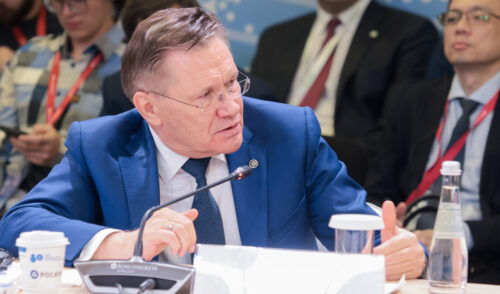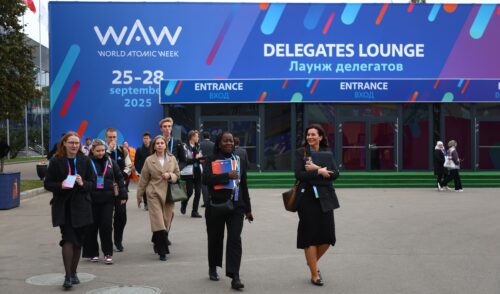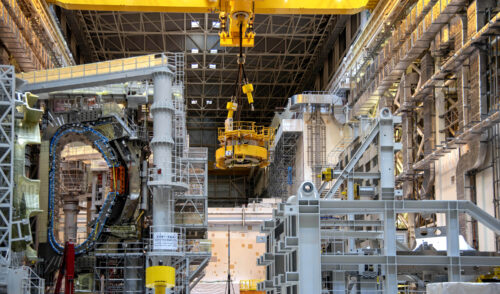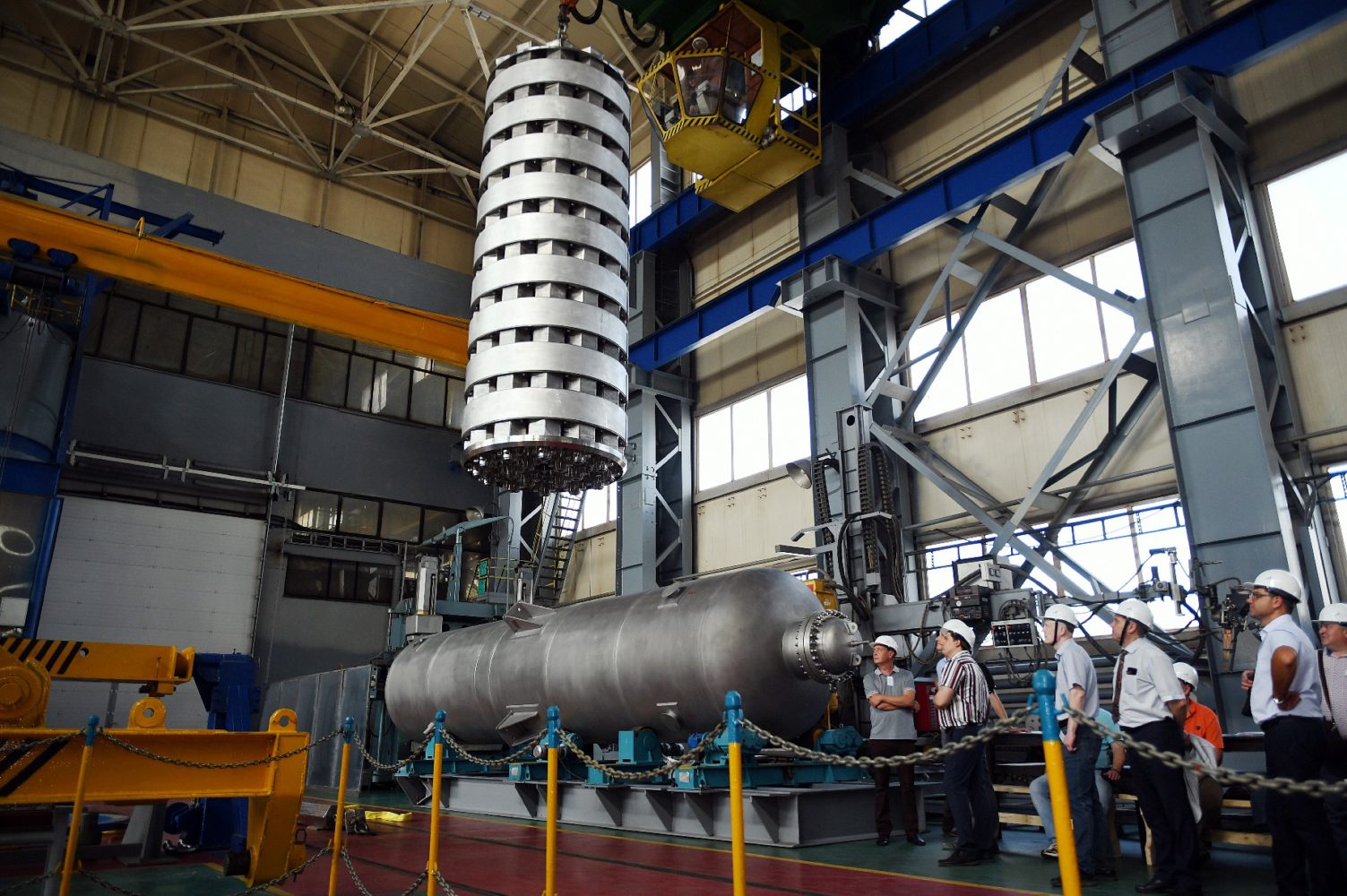
Necessary Balance
back to contentsThe balanced nuclear fuel cycle (Balanced NFC) is a new product line developed by Rosatom’s subsidiaries TENEX and TVEL. Rosatom’s unique proposition that no other country has, the Balanced NFC offers cutting-edge approaches to the management of spent nuclear fuel.
Representatives of the Russian nuclear corporation made two presentations on the new product line at the KazAtomExpo forum held recently in Kazakhstan.
The Balanced NFC is based on the concept of recycling nuclear fuel. The fact is that uranium, which is the primary component of nuclear fuel, does not fully burn out during the reactor operation. In addition, neutron reactions produce plutonium, another fissile material that can also be used as a nuclear fuel component and generate heat. When extracted from spent nuclear fuel (SNF), these elements can be turned into fresh fuel, thus drastically reducing the need for natural uranium and the amount of waste sent for ultimate disposal. This is the essence of reiterated fuel reprocessing within the Balanced NFC.
The Balanced NFC as a product offered to customers comprises four services. These are, first, SNF reprocessing and high-level radioactive waste fractionation; second, production of uranium-plutonium fuel; third, destruction of minor actinides in fast reactors; and fourth, systems for long-term storage and transportation of SNF and high-level waste. These four services cover the entire spectrum of tasks related to the management of spent nuclear fuel from commercial reactors. Customers can order either individual services or the full package. The services are designed for the operators of water-cooled water-moderated reactors (suitable for different modifications of VVERs, PWRs, BWRs, etc.). Specific designs may be customized to meet the customer’s needs and constraints.
How it works: SNF removal and reprocessing
Spent nuclear fuel cooled in the spent fuel pool is packed into leak-proof transportation and handling containers. As the amount of SNF increases, it is reloaded into higher-capacity storage overpacks. When the number of overpacks is enough to form a convoy, they are shipped to Russia for reprocessing at Rosatom’s facilities. This is where the most interesting transformations begin as spent fuel is separated into fractions (fractionated). First, uranium (about 96 % of the total fuel mass) and plutonium (about 1.2 %) are extracted and can be used to make new portions of different types of fuel. Then minor actinides — neptunium, americium and curium — are extracted and sent to fast neutron reactors for destruction. Finally, the so-called ‘short-lived fraction’, mostly strontium and cesium, is vitrified and sent for ultimate disposal.
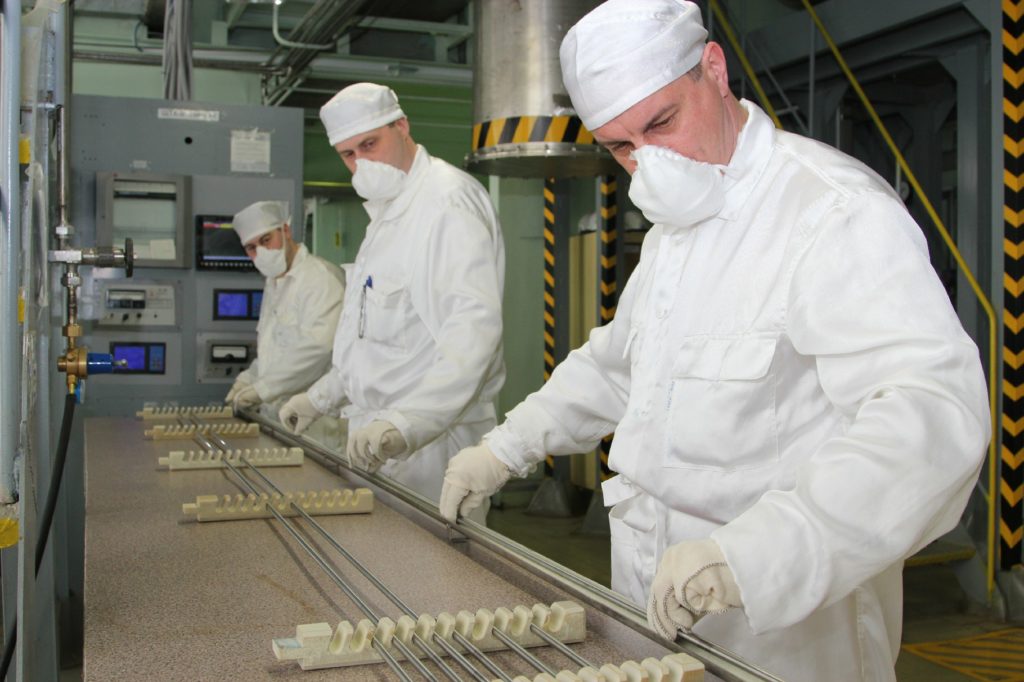
Fabrication of fresh fuel
The nuclear power plant operator can order fuel made of the materials recovered from spent nuclear fuel. Thermal neutron reactors can use either fuel made from regenerated uranium or REMIX fuel, which contains a mixture of uranium and plutonium. It has the same geometry as uranium fuel but differs in neutronic parameters. If the customer does not want to use this option, regenerated uranium and plutonium will be used to fabricate fresh fuel for the reactors in Russia.
Transmutation of minor actinides
This is actually the most uncommon service in the Balanced NFC package. It has no alternative in the market since Rosatom is yet the only company in the world to have brought to life the idea of burning minor actinides — long-lived and highly radiotoxic transuranic elements — in fast neutron reactors. In July 2024, three fuel assemblies with minor actinides added to the fuel composition were for the first time ever loaded into the BN 800 reactor at the Beloyarsk Nuclear Power Plant. We wrote about this event in detail in our previous issue.
When loaded in a fast reactor, americium and neptunium are converted into short-lived or stable elements, whose radioactivity will decrease to the level of natural uranium ore in around 300 years. This is an achievement of paramount importance as it significantly reduces the amount of radioactive waste sent for disposal and its hazards. For comparison, spent nuclear fuel, if untreated, remains potentially hazardous for at least 700,000 years.
Storage and transportation
When ordering removal and recycling services, the customer can also purchase transportation containers, high-capacity storage overpacks, and container storage facilities to house them all. All these components will make fuel handling, storage and transportation safe and secure. Akkuyu is the first nuclear station to have ordered this service. In February of this year, Rosatom delivered its pilot transportation and handling container TUK 137T.A1 to the site.
For the customers ordering the Balanced NFC service, Rosatom will hold the short-lived high-activity fraction for about 30 years. It will then be transported to the customer’s country and placed into the near-surface repository together with medium-activity waste for ultimate disposal. There is another option available: the short-lived high-activity fraction will be extracted and placed into high-capacity storage overpacks at the customer’s site, where they will be held for 30 years until SNF radioactivity reaches the level suitable for disposal.
Customer benefits
With the Balanced NFC, the customer will minimize the amount of waste generated. According to preliminary expert estimates, a nuclear station with two VVER 1200 reactors will generate 7,000 cubic meters of spent nuclear fuel (including packaging) during 60 years of its service life. Seven times less SNF remains after reprocessing. The entire amount of medium-level waste (the matrix included) will fit into 30 high-capacity storage overpacks. Infrastructure costs for temporary storage and ultimate disposal of radioactive waste will be reduced by about 23 %. Another important advantage is the possibility of using ‘green finance’ as the Balanced NFC meets all the latest sustainability criteria. In general, the introduction and broad use of the Balanced NFC services will make it possible to cut down on spent fuel accumulation and reaffirm the status of nuclear as a clean and renewable energy source.
The presentations made at KazAtomExpo raised many questions and positive feedback from the visitors. The questions were primarily related to the solutions for high-level waste fractionation and transmutation of minor actinides, which are still unfamiliar to the broad audience. Positive feedback was related to the fact that Rosatom has created a convenient product that relieves nuclear operators of concerns about the long-term fate of spent nuclear fuel.


